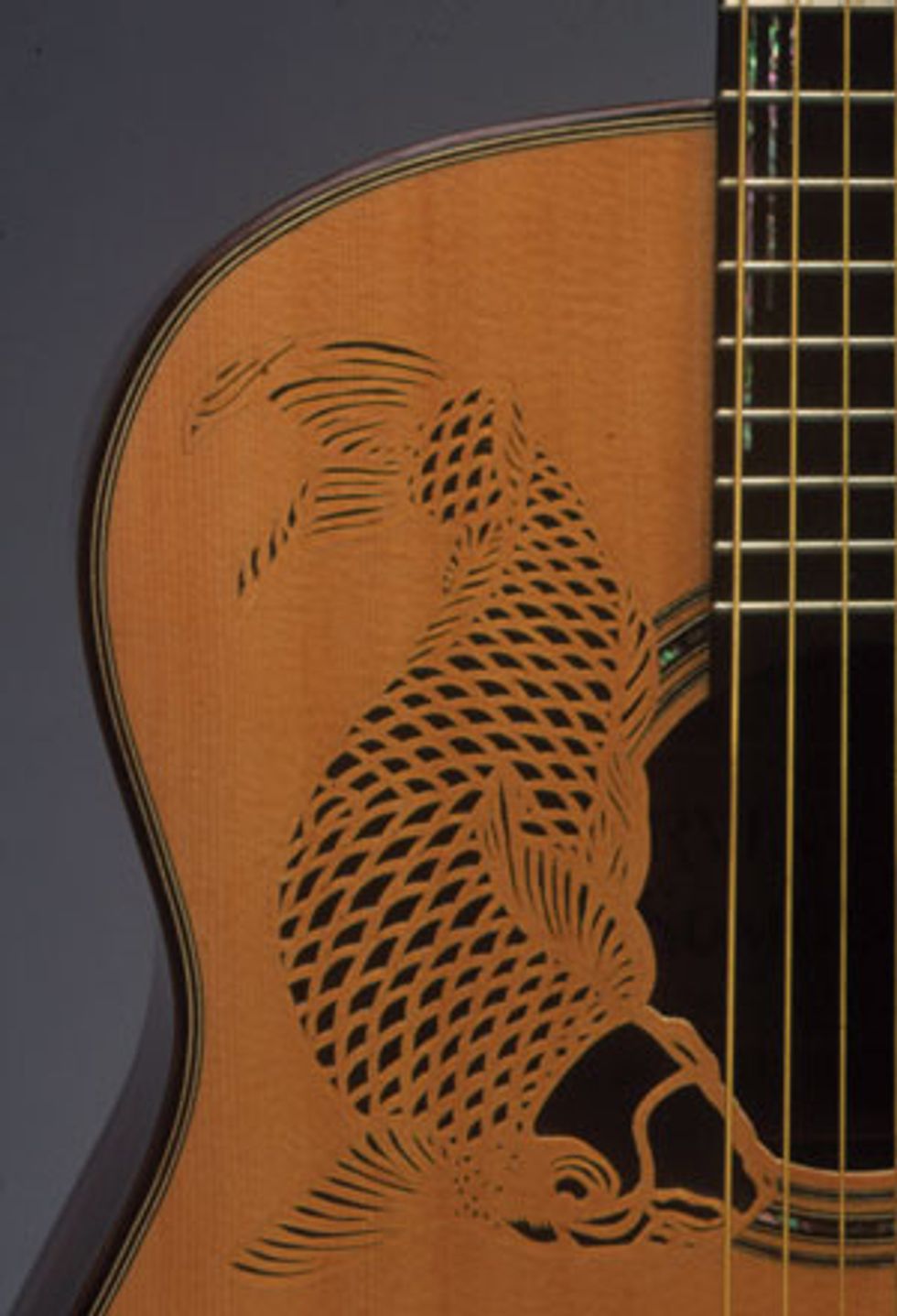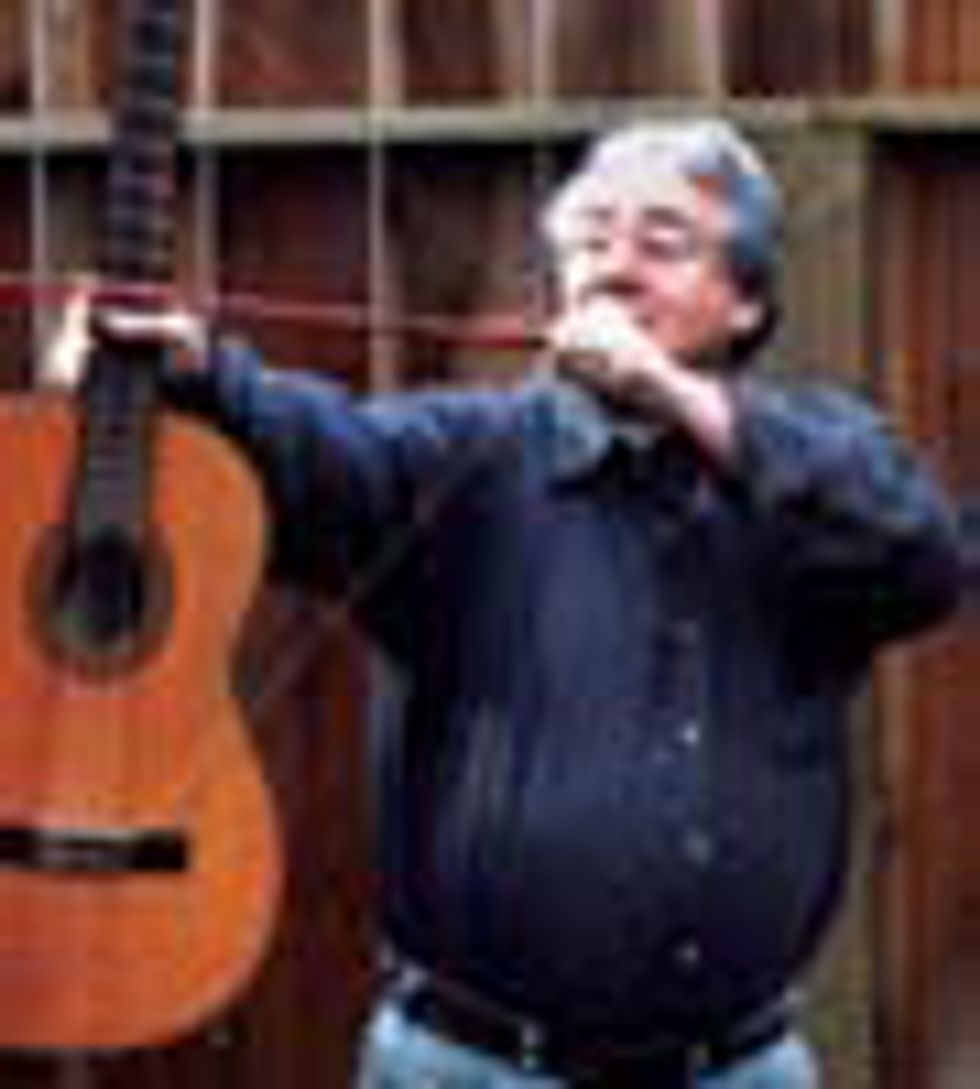Lutherie provides the opportunity to meet and get to know a whole bunch of interesting people who are sometimes quirky, but never stupid.
 If you’re not in a great hurry to
make a living, you can do some
wonderfully creative work.
If you’re not in a great hurry to
make a living, you can do some
wonderfully creative work.In this country, the culture of the modern guitar really started to come into its own with the folk music movement of the ’60s. In fact, that’s when I began my own love affair with the guitar. Many of us who grew up with Peter, Paul, and Mary, the Kingston Trio, the Beatles, and so many other exciting musicians of those days, went out and bought guitars in an effort to emulate our musical heroes. This was also about the time when American lutherie—the making of guitars by individual craftsmen rather than in factories—got its start. It was a time of great musical ferment, optimism, and for many, the beginning of a love affair with this particular musical instrument.
Then, for most of us, life got in the way of that love affair. We were overtaken by jobs, marriages, children, mortgages, careers, and all the rest. Though that early love affair with the guitar may have been placed on the back burner, for a lot of us, it never died.
I know this because I’ve taught guitar making for many years now. I’ve not only seen the cycle—I’ve been a part of it since the guitar crowd has kept up with me insofar as age. More specifically, my students have been more or less my own “youngish” age for many years. Because I’m part of the first generation of Americans to embrace this work, there really wasn’t a pool of like-minded older people to draw from. While I do have some younger students these days, most of my students continue to come from my age and socio-demographic group. Furthermore, unlike the younger students I’ve had, they are at the retiring points of their various occupations. With that, these folks are very open and eager about finally having the time and energy to return their attention to that first love— playing and making the guitar.
Like reuniting with an old flame, these retiree-age individuals don’t want to waste time. They have much less of it than they used to, and they don’t want to spend 20 years learning the basics by making lots of mistakes on their own. They’re eagerly throwing themselves into the work by taking classes, reading books, going to guitar-making schools, watching DVDs, and taking advantage of other resources that weren’t available way back when. Also, because they’ve had “real” lives, they’re adept problem-solvers in a number of ways that younger people are not. They have a huge variety of work and life experiences to draw on towards engaging a chosen pursuit that challenges them—rather than one that has been thrust upon them. In a word, they’re motivated.
I haven’t retired yet and probably never will. But I’ve met enough retirees to know that things like playing golf and traveling don’t have enough staying power for everyone. So for those who are looking for something that has a different kind of staying power, and one that challenges them by using their hands and critical intelligence, guitar making may offer a solution.
In fact, guitar making is a remarkably complex, challenging, and satisfying occupation. And one that can be done at one’s own pace. The learning curve in lutherie is set by a number of variables, including the need to master various handskills and the ability to use and maintain specialized tools. One must understand the choices and availability of a wide spectrum of materials and the tonal potential for each. There are the never-ending design challenges in artistry, engineering, and architecture, and a builder has to sort through the different existing techniques and theories for conducting any particular procedure. Along with developing an understanding of acoustics and dynamics, there are the challenges of mastering a new language to be able to speak with other luthiers—as well as the musicians who play their creations—and continually find ways of improving one’s work and craftsmanship.
Lutherie certainly has its share of frustrations—especially if one is trying to make a living at it. Though if retired, or close to it, one normally doesn’t need to make a lot of money at anything any longer. If one did need to bring in significant money, there are the additional challenges of running a shop, streamlining the work, and the marketing and promotion of one’s work. There’s also dealing with the trade-offs between production problems and the need for artistic creativity and personal expression.
Lutherie provides the opportunity to meet and get to know a whole bunch of interesting people who are sometimes quirky, but never stupid. This can play into vacations and traveling, where one can visit other guitar makers in other places around the country or world. In reality, once one’s shop is set up and the tools are acquired, overhead is reasonably low. So expenditures are pretty much limited to purchases of wood, electricity, and sandpaper.
After a lifetime of chasing other people’s goals, making musical instruments offers a world where one can organize a space that is really one’s own—a space to play in and be reasonably happy in. Lastly, but just as important, there’s the simple love of wood and of making real things. All in all, making a guitar— or mandolin, banjo, ukulele, or other stringed instrument— presents an irresistible combination of challenges and pleasurable intangibles.
 Ervin Somogyi
Ervin SomogyiA professional luthier since the early 1970s, Ervin Somogyi is one of the world’s most respected acoustic-guitar builders and rosette designers. To learn more about Somogyi, his instruments, or his rosette and inlay artwork, visit esomogyi.com.

